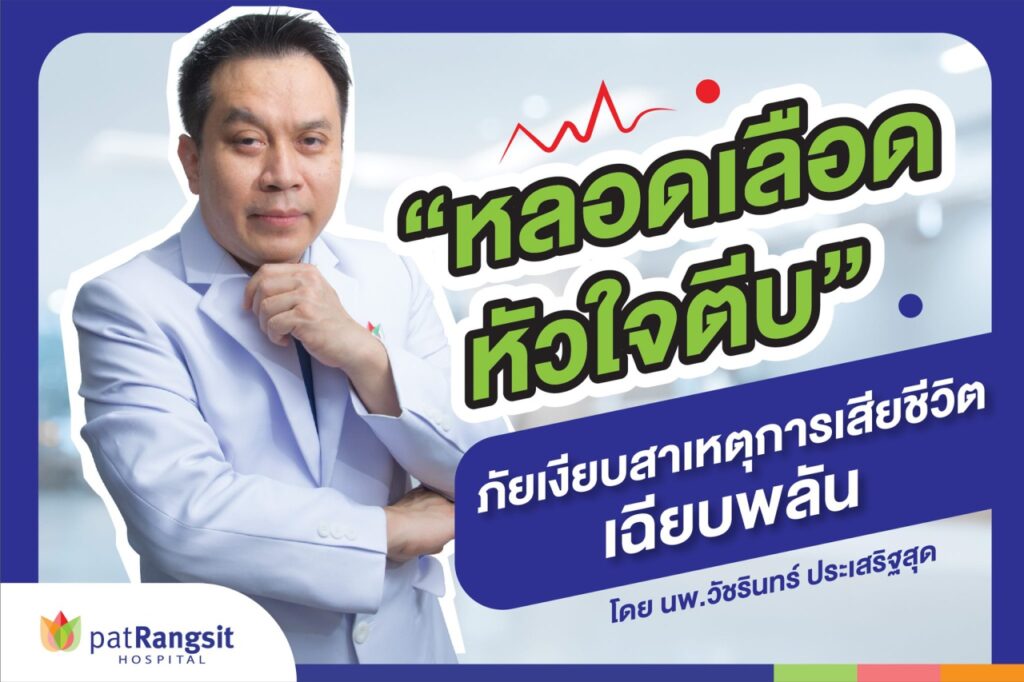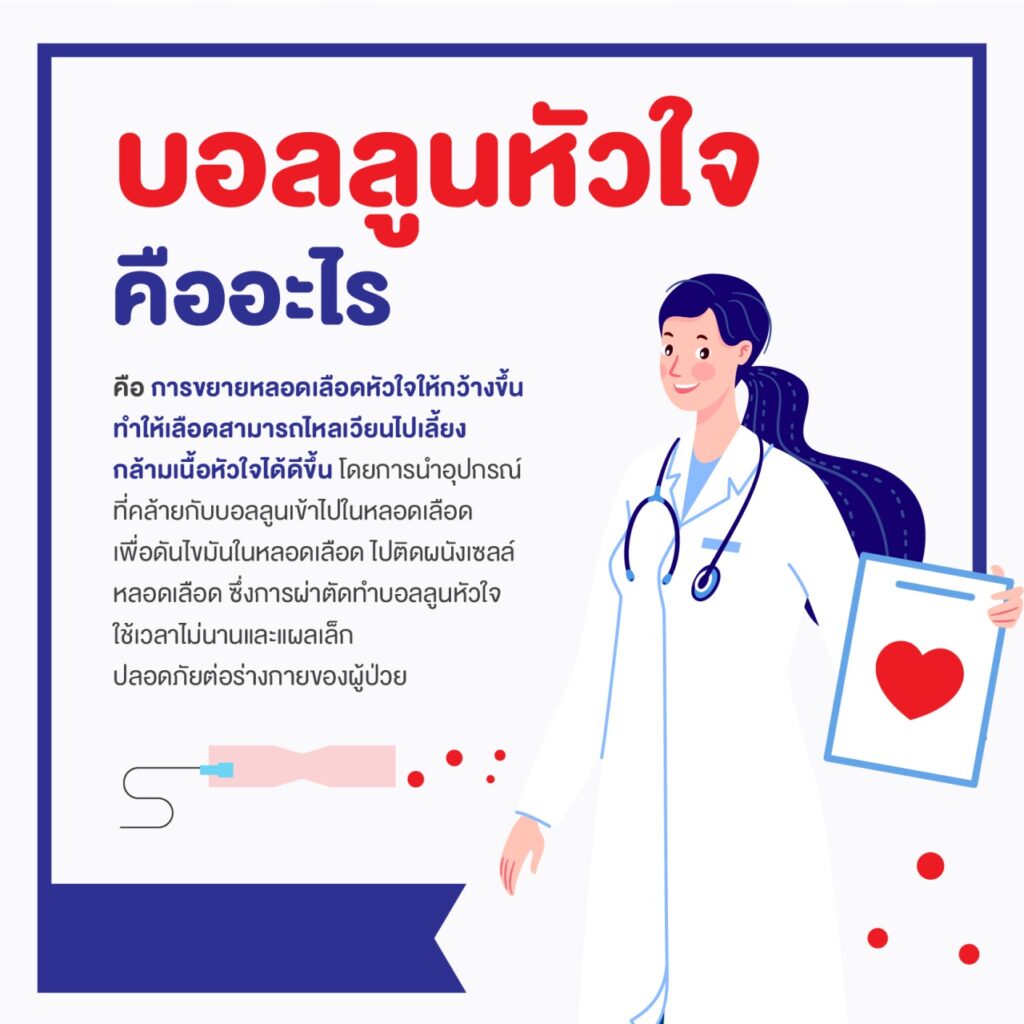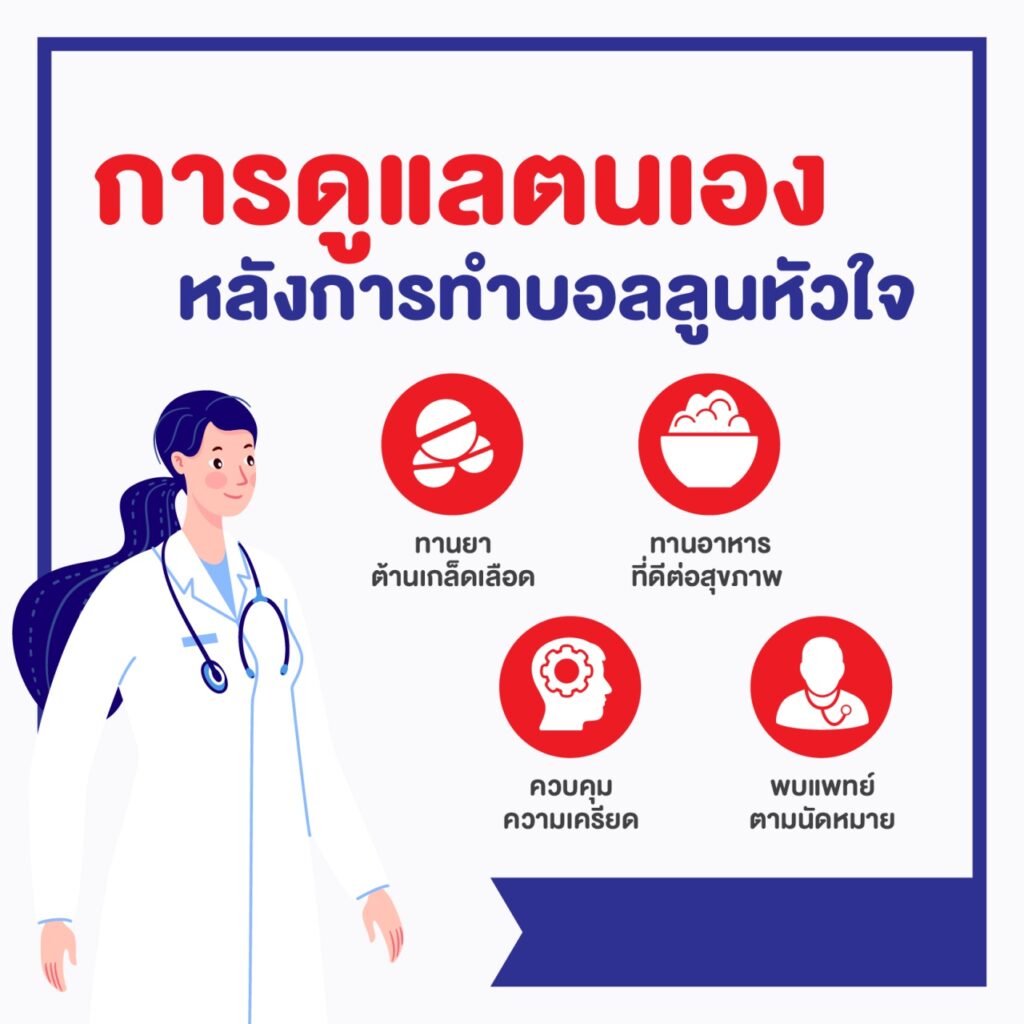
"Coronary Artery Stenosis: The Silent Threat Leading to Sudden Death" by Dr. Watcharin Prasertsud, M.D., Internal Medicine Specialist in Balloon Angioplasty and Stenting of Coronary Arteries.
Coronary artery stenosis, commonly known as the "silent threat," is the leading cause of sudden death. It may or may not present warning signs, and even individuals with good physical health, such as athletes, journalists, or young people, can suddenly collapse.
Some individuals may experience warning signs but mistake them for other conditions, such as heartburn, chest discomfort, symptoms resembling acid reflux, shoulder pain, abdominal discomfort around the upper abdomen, jaw pain, or toothache.
The risk factors for coronary artery stenosis can be divided into two categories:
For individuals diagnosed with coronary artery stenosis, the first step is to reduce controllable risk factors and follow the doctor's recommendations, which may include medication. In cases where coronary angiography reveals stenosis in more than one vessel with more than 70% narrowing, medication alone may not be sufficient. Balloon angioplasty is performed to expand the narrowed coronary arteries, and in some cases with more than three stenoses, heart bypass surgery may be necessary.
Prevention of coronary artery stenosis involves reducing controllable risk factors, such as regular exercise (at least 30-40 minutes per day, five days a week). Those with risk factors for heart disease should undergo annual heart health check-ups.

บทความโดย
นพ.วัชรินทร์ ประเสริฐสุด

What is heart disease?
Heart disease is characterized by abnormalities in the functioning of the heart and can have detrimental effects on the body. It encompasses several types, including coronary artery disease, heart muscle disease, heart valve defects, arrhythmia, and congenital heart defects.
Symptoms of heart disease The symptoms of heart disease vary depending on the specific type. However, there are five common symptoms that can aid in diagnosis:
Risk factors for heart disease Heart disease can be attributed to various causes, which can be categorized into two groups:
Group 1: Factors that cannot be controlled, such as:
• Congenital heart abnormalities or a family history of heart disease, which can increase the risk compared to the general population
• Aging, which can lead to decreased organ function, including the heart
• Gender, as men tend to have a higher incidence of heart disease than women
Group 2: Factors that can be controlled, such as:
• Managing congenital conditions like diabetes, high blood pressure, or hyperlipidemia, which can reduce the risk of heart disease
• Avoiding substances like alcohol, cigarettes, certain medications, or drugs for weight loss
• Preventing infections, as bacterial or viral infections can lead to heart infections and subsequent heart disease
Diagnosis of heart disease?
• Medical history and physical examination
• Electrocardiogram (ECG)
• Echocardiography to assess the heart's structure, function, and valve condition
• Exercise stress test to evaluate coronary artery disease
• Imaging techniques such as X-rays or other electromagnetic waves
• Cardiac catheterization to assess potential blood vessel problems in the heart
The treatment of heart disease
Treatment methods for heart disease vary based on the specific type and individual circumstances. Generally, the following approaches are utilized:
Regardless of the treatment method, continuous symptom monitoring, risk factor control, maintaining a healthy lifestyle, regular exercise, a balanced diet, adequate rest, and stress management are essential for reducing the risk of recurrent heart disease.

บทความโดย
นพ. ไพบูลย์ เชี่ยวชาญธนกิจ



What is a heart balloon?
A heart balloon is used to widen the coronary artery. By introducing a device similar to a balloon into the blood vessels, it allows for better blood flow to the heart muscle. It pushes the fat in the blood vessels against the walls, facilitating the expansion of narrowed or blocked arteries. Heart balloon surgery is a relatively quick procedure, and the incision is small, ensuring safety for the patient.
The process of heart balloon treatment:
Self-care after heart balloon treatment:
Advantages of heart balloon treatment:

บทความโดย
นพ.วัชรินทร์ ประเสริฐสุด
เว็บไซต์นี้มีการใช้งานคุกกี้ เพื่อเพิ่มประสิทธิภาพและประสบการณ์ที่ดีในการใช้งานเว็บไซต์ของท่าน